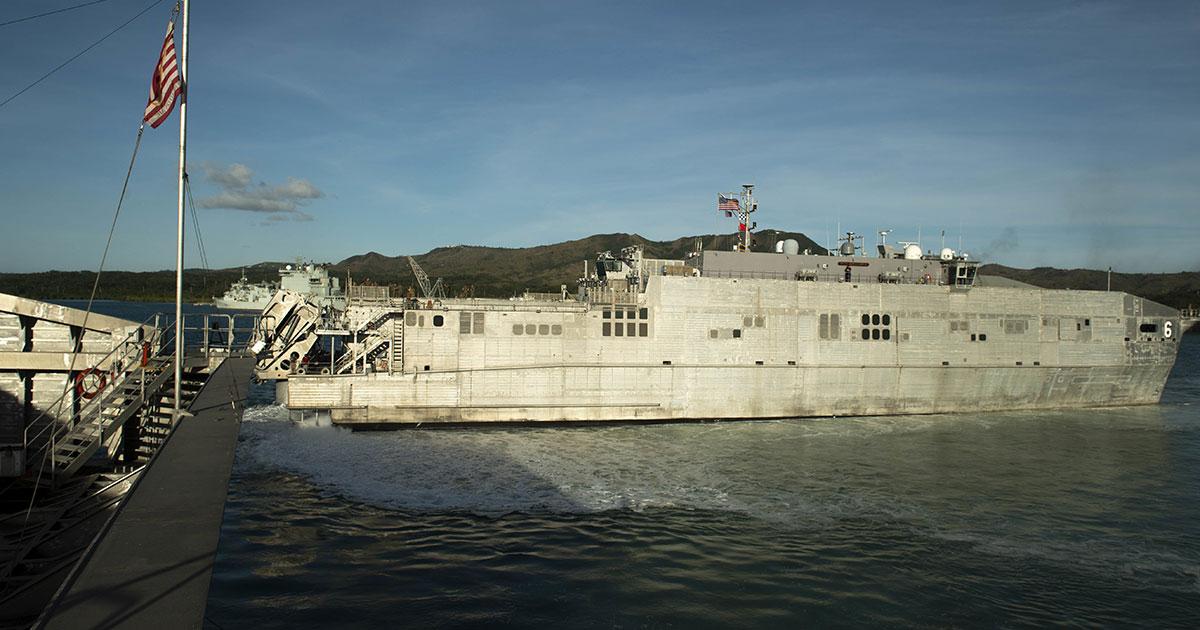US Navy and Allied Nations Participate in 14th Pacific Partnership Mission

The U.S. Navy will join allied and partner nation forces for the 14th Pacific Partnership mission, scheduled to begin March 4. This annual maritime operation will help improve disaster response preparedness, resiliency and capacity while enhancing partnerships with participating nations and civilian humanitarian organizations throughout the Indo-Pacific.
Pacific Partnership is the largest annual, multilateral disaster response preparedness mission conducted in the Indo-Pacific. This year's mission will be led by Commander, Destroyer Squadron 1, embarked in the expeditionary fast transport ships USNS Brunswick (T-EPF 6) and USNS Fall River (T-EPF 4). It will include more than 500 military and civilian personnel from Australia, Canada, Japan, Malaysia, Peru, the Philippines, South Korea, Thailand, the United Kingdom and the United States.
“Pacific Partnership is about building trust and sharing knowledge," said Rear Adm. Joey Tynch, commander, Task Force 73, the executive agent for Pacific Partnership 2019. “This mission shows that the U.S., our partners and hosts are working together to making this region better prepared for disaster response.” Experts in the fields of engineering, medicine and disaster response will partner with each host country to conduct civic-action projects, community health exchanges, medical symposiums and disaster response training activities.
Engagements between Pacific Partnership participants and host nations are intended to improve capacity, enhance regional partnerships and increase multilateral cooperation for disaster preparedness.
“Pacific Partnership brings nations together to prepare in calm to respond in crisis,” said Capt. Randy Van Rossum, commodore, Destroyer Squadron 1, the mission commander for Pacific Partnership 2019. “Our mission team, made up of servicemembers and volunteers from around the world, reflects this enduring commitment to the region.”
Pacific Partnership began in response to one of the world's most catastrophic natural disasters, the December 2004 tsunami that devastated parts of South and Southeast Asia. The mission has evolved over the years from emphasis on direct care to an operation focused on enhancing partnerships through host nation subject matter expert and civil-military exchanges.
Pacific Partnership 2019 will have several distinctions from previous iterations:
This year's mission will be conducted from aboard two expeditionary fast transport ships, which provide rapid intra-theater transport and have the capability to conduct relief operations in small or damaged ports. This year's planning and activities reflect the region's interest in building Humanitarian Assistance/Disaster Relief capability and strengthening resilience. This is the second year a multinational command-and-control structure will be used, consisting of a director of mission from the United Kingdom and mission chief staff officer from Australia. Pacific Partnership will continue to leverage the U.S. National Action Plan on Women, Peace and Security (WPS), a plan backed by Executive Order 13595 and UN Security Council Resolution 1325. Integration of WPS into Pacific Partnership yields opportunities to engage with partner nations on the topics of gender integration and gender perspectives, as well as preparedness in dealing with vulnerable populations (women, children, elderly and disabled) during and in the aftermath of crises.

